1. Lesson 9: COLLABORATIVE ICT DEVELOPMENT
1.1. Web Portal
1.1.1. Different sources
1.1.2. One location
1.1.3. Uniform
1.1.4. Yahoo!
1.1.4.1. One Page
1.1.4.1.1. Weather
1.1.4.1.2. Email
1.1.4.1.3. News
1.2. Online Collaborative Tools
1.2.1. Working together
1.2.2. "go the distance"
1.2.3. Facebook
1.2.3.1. Group
1.2.3.1.1. Communicate
1.2.4. Wordpress
1.2.5. Google Drive
1.2.5.1. Cloud storage
1.2.6. Microsoft word
1.2.6.1. Group office files
1.2.7. Microsoft Yammer
1.2.7.1. Content
1.2.7.1.1. Managing
1.2.7.1.2. Sharing
1.2.8. Trello
1.2.8.1. To-do checklist
1.2.8.2. Create
1.2.8.2.1. New Organization
1.2.8.2.2. Boards
2. Lesson 10: INTERACTIVE MULTIMEDIA
2.1. Interactivity
2.1.1. Personal blog
2.1.2. Website
2.1.2.1. Company
2.1.2.2. Web 2.0
2.1.2.3. Web 3.0
2.1.2.3.1. Web host
2.1.2.4. Internet
2.1.2.4.1. Slow
2.1.2.4.2. Fast
2.1.2.5. World Wide Web
2.1.3. Multimedia content
2.1.3.1. Videos
2.1.3.1.1. Youtube
2.1.3.2. Audio
2.1.3.2.1. Music
2.1.3.2.2. Sound
2.1.3.3. Online Games
2.1.3.3.1. Browser-based
2.1.3.4. Online tests
2.1.3.4.1. survey forms
2.1.3.4.2. Tests
2.1.3.5. Courseware
2.1.3.5.1. Online courses
2.1.3.5.2. Learning Management System
2.1.3.5.3. E-learning
2.1.3.6. Podcasts
2.1.3.6.1. Stuff You Should Know
2.1.3.6.2. TED Talks
2.1.3.6.3. The Starters
2.1.3.6.4. Ear Biscuits
2.1.3.7. Vodcasts
2.1.3.7.1. Streamed online
3. Lesson 8: BASIC WEB PAGE CREATION
3.1. Codes
3.1.1. Cascading Style Sheets
3.1.2. Hypertext Markup Language
3.2. Internet
3.3. No Codes
3.3.1. WYSIWYG
3.3.1.1. Page
3.3.1.1.1. Type
3.3.1.1.2. Insert
3.3.1.1.3. Draw
3.3.1.1.4. Place
3.3.1.1.5. Rearrage
3.3.1.2. Online
3.3.1.3. Creating a website
3.3.1.3.1. Office Applications
3.3.1.3.2. Jimdo
3.3.1.4. Editor
3.3.1.4.1. Navigator
3.3.1.4.2. Counter-clockwise
3.3.1.4.3. Editing Elements
3.3.1.4.4. Visual Element
4. Lesson 7: ONLINE PLATFORMS FOR ICT CONTENT DEVELOPMENT
4.1. Social Media Platforms
4.1.1. Website
4.1.1.1. Facebook
4.1.1.1.1. Personal Accounts
4.1.1.1.2. Pages
4.1.1.1.3. Groups
4.1.1.1.4. Content
4.1.1.1.5. Billions of users
4.1.1.2. LinkedIn
4.1.1.2.1. Business
4.1.1.2.2. Professional networking
4.1.2. Popular
4.2. Blogging Platforms
4.2.1. Website
4.2.1.1. Content and Design
4.2.1.1.1. Tumblr
4.2.1.1.2. Blogger
4.2.1.1.3. Wordpress
4.2.1.2. Newsletter
4.2.1.3. Customization
4.3. Content Management System (CMS)
4.3.1. Application
4.3.1.1. Browser-based
4.3.2. Web Content
4.3.2.1. Publish
4.3.2.2. Edit and Manipulate
4.3.2.3. Organize
4.3.2.4. Delete
4.3.3. Blogs
4.3.4. News websites
4.3.5. Shopping
4.4. Cloud Computing
4.4.1. Infographics
4.4.1.1. Piktochart
4.4.1.1.1. Infographic editor
4.4.2. Blog
4.4.2.1. Wordpress
4.4.2.1.1. Blog editor
4.4.3. Over the internet
4.4.4. Advantages
4.4.4.1. No installation
4.4.4.2. Saves hard disk space
4.4.4.3. Easy access
4.4.4.4. Saves Money
4.4.4.5. No need to update
4.4.4.6. Minimum system requirements
4.4.4.7. Easy Backup and data recovery
4.4.5. Disadvantages
4.4.5.1. Can be hampered down by slow or no internet
4.4.5.2. May require compatible software
4.4.5.3. You do not own the software
4.4.5.4. Security risk
4.4.5.5. Prone to hacking
4.4.5.6. Limited control
